Hidden in the “Forest Where Lies are Revealed”, at a fork in Kyoto‘s Kamo River, just north of the Gion area, is the ancient site of Shimogamo Shrine.
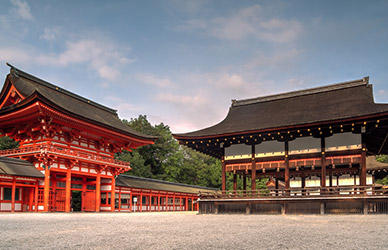
In this article:
This World Heritage site in Kyoto is officially called Kamo-mioya-jinja (賀茂御祖神社), but more commonly called Shimogamo-jinja (下鴨神社), and it doesn’t have the beaten tourist path of more popular tourist hotspots in Kyoto like Kinkaku-ji, Fushimi Inari Taisha, Nijo-jo or the Kyoto Imperial Palace.
Shimogamo Shrine is a “sister” shrine to Kamigamo-jinja.
Shimogamo-jinja is free to enter and is open very early (gates open at 6:30AM), so it’s a great place to start if you want a full day in Kyoto.
This article and all photos are from my visit to the shrine on a very hot summer’s day.
After staying the night at the amazing 9hours capsule hotel near Gion, I left the hotel at 5AM and headed to a convenience store for a few cans of coffee and energy snacks. After a beautiful walk north along the Kamo River, I found myself in a surreal forest…
Explore Shimogamo-jinja (photos & info)
![Shimogamo-jinja's roumon (main gate) in Kyoto [HDR]](http://japantravelmate.com/wp-content/uploads/2013/05/15-Shimogamo-jinja-roumon-kyoto-HDR1.jpg)
One thing I’ve always loved about Japan is the contrast between old and new. This is a classic example: a torii flanked by vending machines…
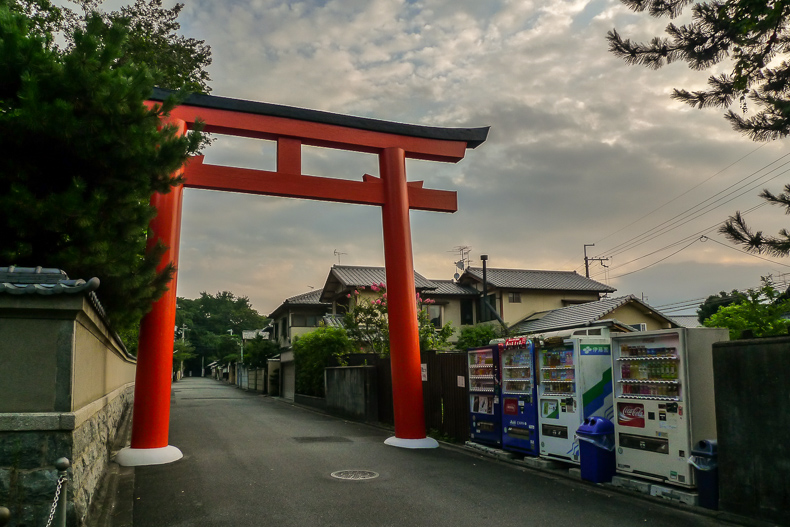
.
The Tadasu-no-mori (糺の森 / Forest of Correction), a sacred and ancient woodland that takes up a large area to the south of the shrine (and surrounds the shrine) was very peaceful when I arrived at about 6AM. Oji-sans and Oba-sans (Japanese for grandfather and grandmother) were doing their morning group calisthenics. Sounds of a stream could be heard in the distance.
In this area is the recreation of an ancient ritual site…
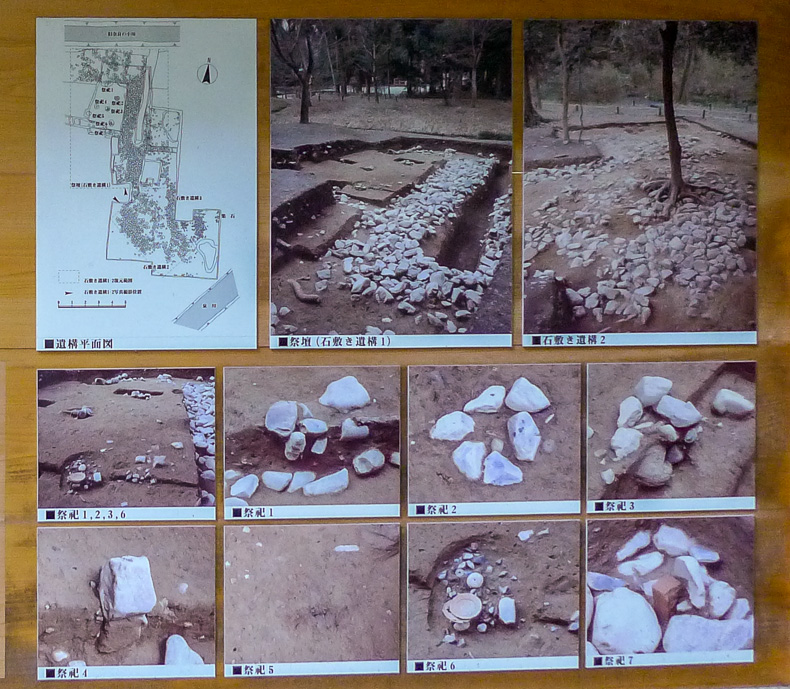
From the sign:
… Excavations have been carried out in this vicinity since 2001 for the purposes of environmental preservation and, as a result, various ritual remains and the remains of a square ritual altar constructed in the late Heian period (late 12th century) have been unearthed.
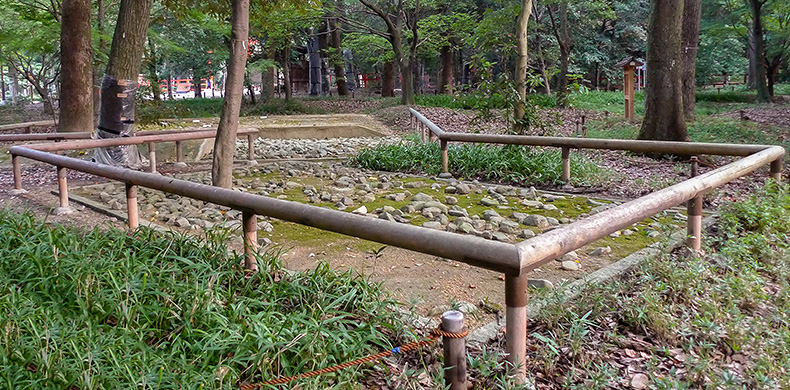
Many small streams run through the forest area and the shrine complex. Approaching the water ablution pavilion, a stunning small bridge helps you toward the shrine entrance.
![An old stone bridge runs over the Nara-no-ogawa (奈良の小川 / Nara Stream) [HDR Photo]](http://japantravelmate.com/wp-content/uploads/2013/05/04-shimogamo-jinja_ancient_stream-HDR1.jpg)
After performing the temizu (te = hand and mizu = water, which is the process of purification at a water basin by the entrance of shrines) you’ll be at the shrine’s main torii. There are many signs on either side of this torii, of most interest is the official UNESCO plaque stating that this is officially one of the World Heritage Cultural Sites – Historic Monuments of Ancient Kyoto.
The key word here is ancient, as relics and sites found in and around the shrine could date as far back as 10,000BC.

After stepping through the torii gate, you’ll be walking towards Shimogamo-jinja’s rōmon (楼門 / tower gate), an icon of the site. This type of tower gate can be found at other Shinto sites, such as Kiyomizu Temple and Fushimi-Inari Shrine.
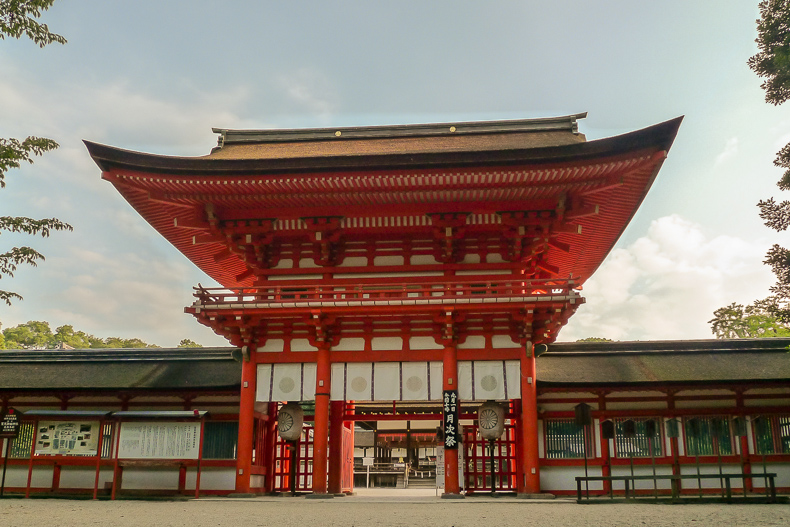
The gate itself is a Japanese national treasure, as are most of the other buildings in the shrine. After proceeding through the gate, you’re now standing in the shrine grounds.
It’s name suggest something completely different, but although the Shinbuku-den (神服殿 / “Clothing for the Gods” Hall) was once used to sew clothing for the gods, it eventually became a backup temporary residence for the Emperor if the Kyoto Imperial Palace ever caught fire. The hall was actually used as a resting place for the Emperor when he visited. Several visits took place between the late 8th and mid 12 centuries.
Next to the Shinbuku-den is the Mai-dono (舞殿 / Sacred Dance Hall). Over the centuries, Emperors have visited Shimogamo-jinja to pray for the welfare of the entire country. Prayers and gifts from the Emperor would be taken into this hall. Today it is used for dance performances during festivals and ceremonies held throughout the year.
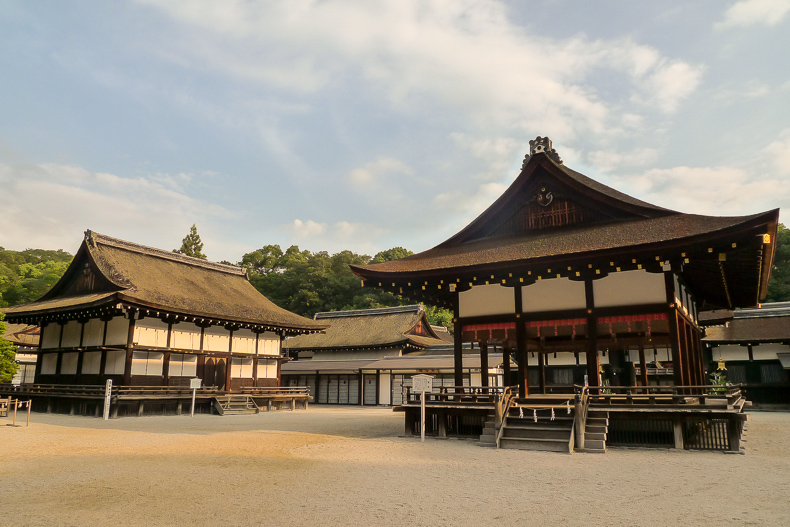
It was at about this time, just after passing through the tower gate, that I noticed people sporadically walking between these two buildings toward the inner shrine. Some of them were the elderly people I’d seen earlier, exercising in the forest. It wasn’t until I read about the history of Shimogamo-jinja that I realised that people have been doing this for thousands of years!
Nature, and especially water, are very important elements in the shrine. A few small streams feed off the main Kamo River into the shrine.
Next to the two halls above is the tiny Mitarashi-gawa (御手洗川 / Mitarashi Stream) and the Tama-hashi (玉橋 / Tama Bridge). In July every year, the Mitarashi Matsuri (御手洗の夏祭り / Mitarashi Festival) is held, where a purification ceremony takes place and people walk knee-deep in the stream for ritual cleansing.
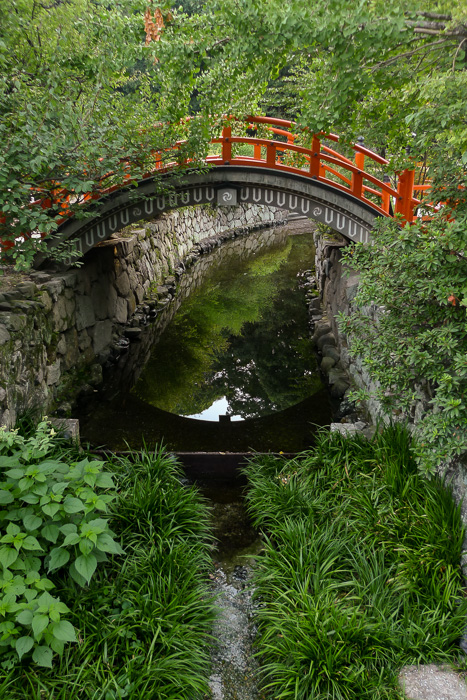
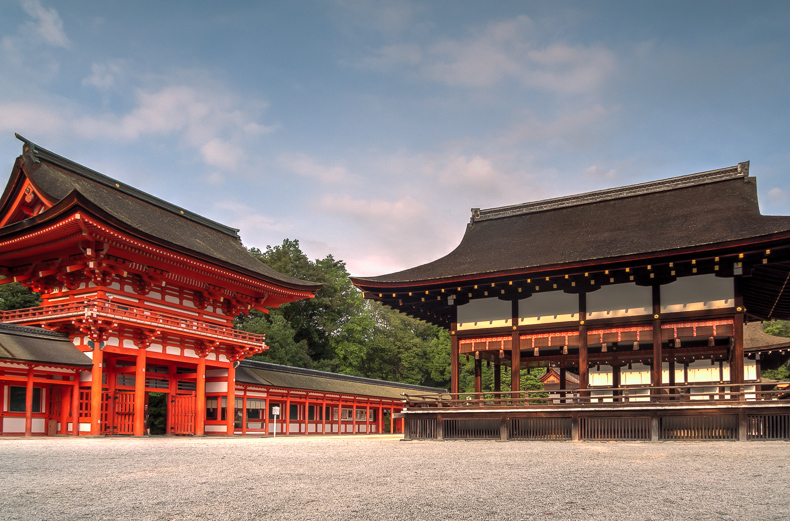
Following the path of the Oji-sans and Oba-sans who were going to pray at the inner shrine area, I could feel the history of the site. There were no sounds of the city to be heard, only nature. In this part of the shrine you are surrounded by multiple small shrines and impressive gold lanterns, all inside a inner walled section.
Getting closer and closer to the World Heritage buildings, another familiar sight is seen – wooden prayer plaques called ema (絵馬 / small wooden boards with prayers written on them) hang in neat rows next to a small shrine. Here at least 4 Koto-sha (言社 / kotosha “affiliated shrine”) are located, dedicated to Okuninushi-no-mikoto, the god of national affairs. There are 7 shrines in total dedicated to this deity in the shrine complex.
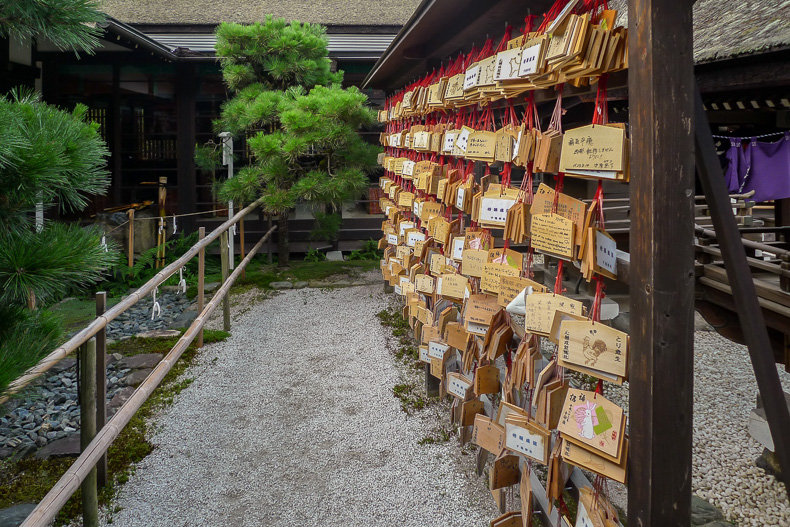
While looking at the kotasha, movement behind the walls deeper in the shrine caught my eye. A monk was ceremoniously walking toward the main halls. He sat down and performed some prayers and rituals, and offered food and drink to the deity enshrined here.
The monk was facing the two main halls: the Nishi-Honden (西本殿 / Western Sanctuary) and the Higashi-Honden (東本殿 / Eastern Sanctuary). These two halls are the World Heritage buildings of Shimogamo-jinja, all other buildings are National Treasures of Japan.

The east sanctuary is dedicated to Tamayorihime-no-mikoto, the deity of good family lines and child rearing and the mother of the deity enshrined at Kamigamo Shrine. The west sanctuary is dedicated to Kamotaketsunumi-no-mikoto, the guardian deity of good fortune who helped the Emperor Jinmu.
Quote source: Shimogamo Shrine Close Up – Main Hall and Koto-sha.
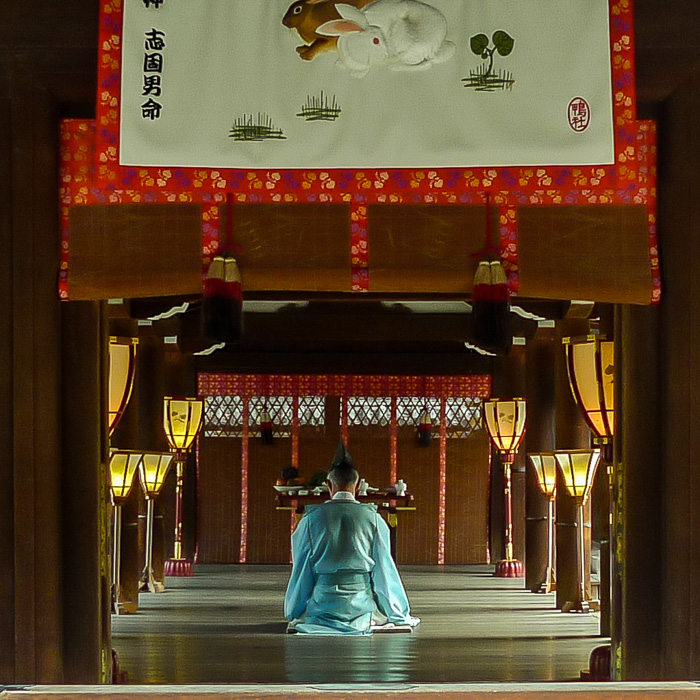
Either side of the hallway in front of the monk (in the picture above) are the Western and Eastern Sanctuaries. Standing guard at these buildings are two koma-inu (狛犬 / lion-dog statue). The sanctuaries are somewhat hidden, so I had to take a couple of shots to (badly) fake a photo of one of the halls (see below).
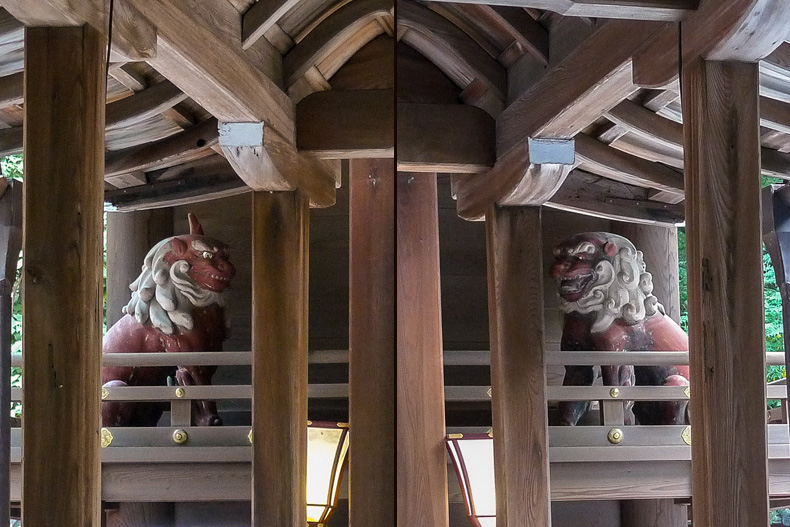
In the center of this inner shrine area, in front of the main hall and beside the koto-sha is the Kawai-jinja Mai-dono (河合神社舞殿 / Kawai Shrine Sacred Dance Hall). This shrine is adorned with glittering gold “sponsored” lanterns and plays an important role in an ancient ceremony that is still held to this today.
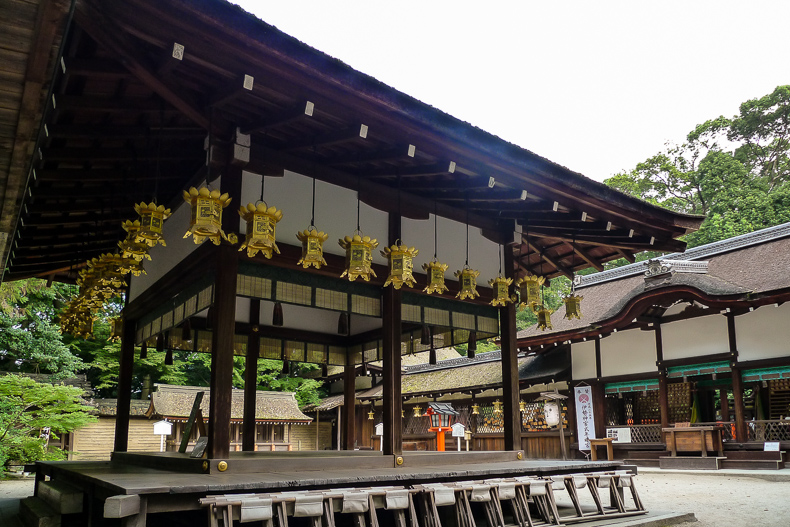
The (Kawai-jinja) shrine is dedicated to Tamayorihime-no-mikoto (the goddess associated with Emperor Jinmu thought to promote good child rearing) who is believed by many to be a guardian deity for women.
Quote source: Shimogamo Shrine Close Up – Kawai Shrine.

These gold hanging lanterns are called tsuri-dōrō (つり灯籠 or 釣灯籠 / sponsored hanging lantern). The sign says “your dedication hanging lanterns” (ご奉納 つり灯籠について / gohōnō tsuri-tōrō ni tsuite).
- 1 small lantern is 300,000円 (about $3,000)
- 1 large lantern is 500,000円 (about $5,000)
The lanterns are hung at the shrine, dedicated to prayers for your family and their safety.

It was time to start moving again (although it was early, I still planned to see Ginkaku-ji and Daigo-ji today). Exiting the Kawai Shrine area, you pass through the Naka-mon (中門 / Middle Gate).
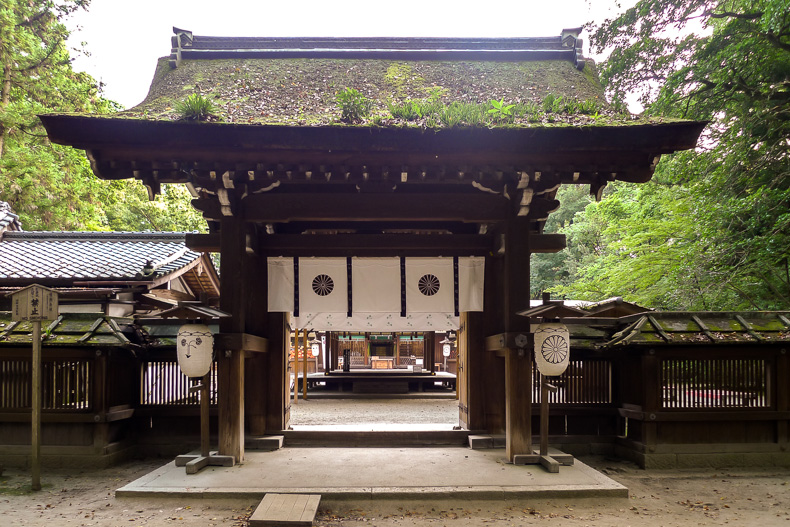
Beside the Tama-hashi Bridge is the Hashi-dono (橋殿 / Bridge Hall). This hall sits on top of the Mitarashi-gawa stream, hence it is literally a bridge-hall over this small stream.
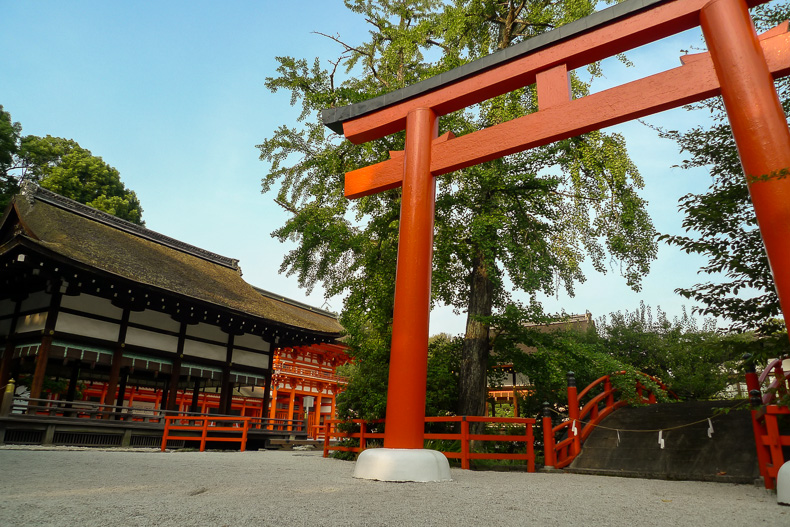
At the end of the Mitarashi-gawa stream is the Mitarashi-sha (御手洗社 / Mitarashi Shrine) which is formally known as Inoue-sha (井上社 / The Shrine Over The Well).
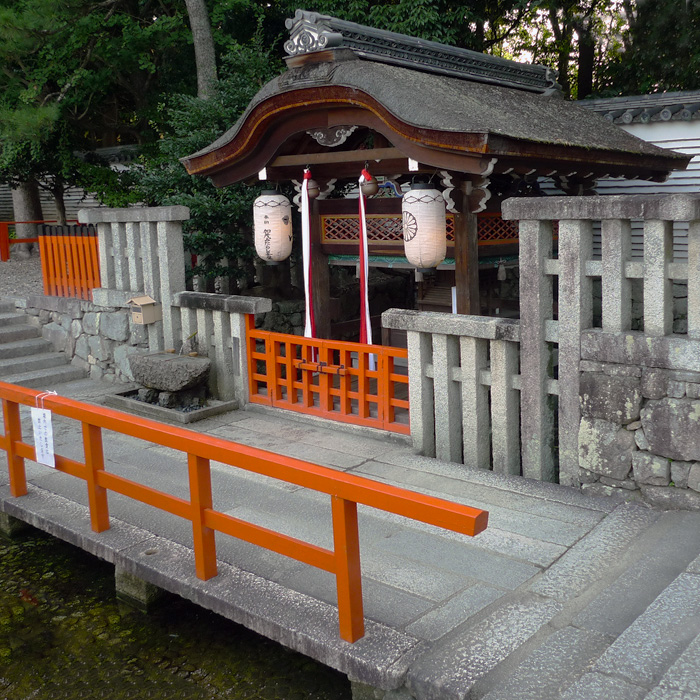
Rows of komo-daru (菰樽 / decorative sake barrels) represent the use of sake in Shinto ceremonies. The original word for sake is miki (神酒), the kanji literally means god wine. Barrels are given to shrines by brewers, symbolising the tradition of the brew’s use at ceremonies and festivals. Meiji-jinju in Shibuya, Tokyo is another shrine where you can find large displays of the barrels.
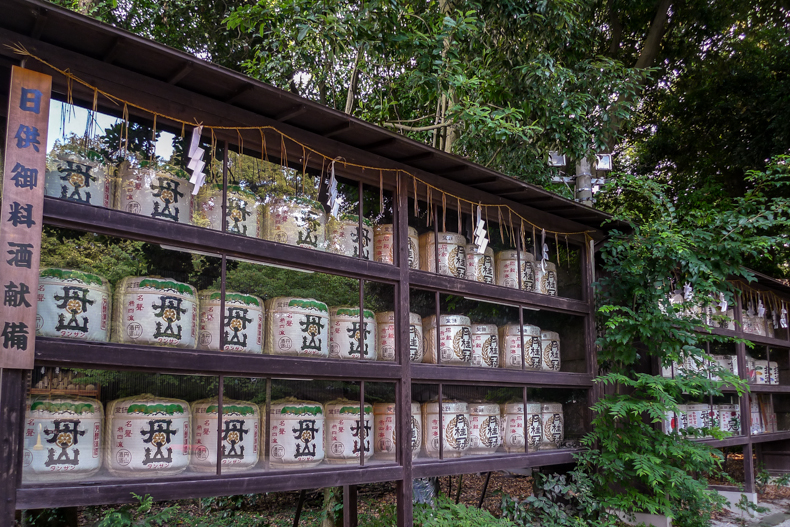
Quick fact: although westerners use the term sake when referring to Japanese rice-wine, in Japanese sake is actually the word for alcohol. The rice-wine we call sake is actually called nihon-shu (日本酒) literally meaning “Japanese alcohol”.
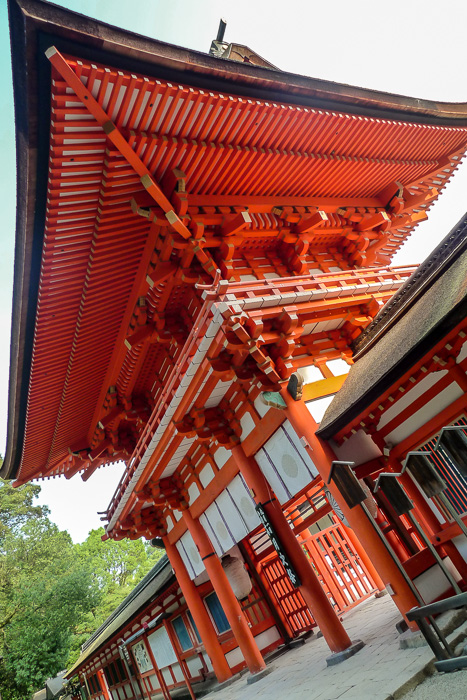
Shrine map & main buildings
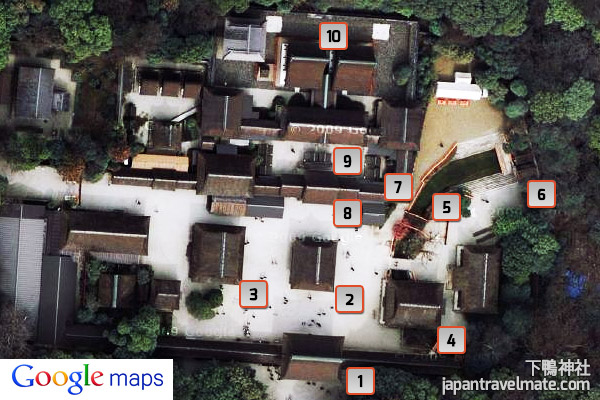
- Rōmon (楼門 / tower gate)
- Mai-dono (舞殿 / Sacred Dance Hall)
- Shinbuku-den (神服殿 / “Clothing for the Gods” Hall)
- Hashi-dono (橋殿 / Bridge Hall)
- Tama-hashi (玉橋 / Tama Bridge)
- Mitarashi-sha (御手洗社 / Mitarashi Shrine) formally known as Inoue-sha (井上社 / The Shrine Over The Well)
- Koto-sha (言社 / koto-sha “affiliated shrine”)
- Naka-mon (中門 / Middle Gate)
- Kawai-jinja Mai-dono (河合神社舞殿 / Kawai Shrine Sacred Dance Hall)
- Honden (本殿 / Main Hall)
How to get to Shimogamo-jinja
Bus from JR Kyoto Station:
Take bus 4 or 205 from the front (north side) of Kyoto Station (called Kyotoeki-mae / 京都駅前) to Shimogamojinja-mae (下鴨神社前). Buy an all day 500円 bus pass, it’s the best way to travel Kyoto. A one-way trip is 220円 for an adult, so it ends up being good value (and very convenient!)
Train from JR Kyoto Station to Demachiyanagi Station:
Note that this route requires the least walking however I advised against this, there are too many transfers… 1. Take the JR Nara Line Local from JR Kyoto Station to Tofukuji Station. 2. At Tofukuji Station, transfer to the Keihan Main Line Sub-Express and go to Sanjo Station. 3. At Sanjo Station, transfer to Keihan Main Line Limited Express and go to Demachiyanagi Station. 4. Walk 8 minutes from Demachiyanagi Station to the shrine.
Train from JR Kyoto Station to Kuramaguchi Station:
1. Take the Kyoto City Subway Karasuma Line from JR Kyoto Station to Kuramaguchi Station. 2. Walk 10 minutes from Kuramaguchi Station to the shrine.
Walk from the Kyoto Imperial Palace:
The walk is just under 2kms and should take around 25 minutes. I highly recommend this, you’ll see some interesting parts of Kyoto. You can also follow this path if you want to visit the Palace after the shrine.
Walk along the Kamo River from 9hours Capsule Hotel/Kawaramachi Station/Gion area:
This is the walk I did, and it was amazing to stroll along Kyoto’s main river (Kamo River). In total the walk is about 4km and would take about an hour (more if you stop for lots of photos, like I did!). If you still want to walk along the river, but don’t want to walk as far, take the subway to Kyoto Shiyakusho-mae from JR Kyoto Station and walk from there.
Opening hours and admission cost
Opening hours:
Gates open at 6:30AM and close at 5PM.
The shrine is open everyday, and on New Years Eve from midnight into the early hours of New Years Day.
Admission cost:
Admission is free, except for the 500円 cost to enter a special prayer hall which is open from 9AM to 4PM.
Traveler’s tips
- If you’d like to get an early start on your day, visit Shimogamo-jinja first as it opens early. I was there at around 6:30AM.
- Take the time to walk the park from south to north leading to the shrine (or north to south when exiting).
- Buy a 500円 all day bus pass. Available at the bus stop in front of JR Kyoto Station and usually from your hotel’s reception. You cannot buy this pass on the bus.
- Visit both Shimogamo Shrine and Kamigamo Shrine on the same day. They are close to each other and are on the same bus route.
Other things to do in Kyoto
- Kyoto Gosho (Imperial Palace) – the closest major site to Shimogamo-jinja.
- Kinkaku-ji (World Heritage)
- Nijo-jo (World Heritage)
- Fushimi Inari Taishi (World Heritage)
- Kamigamo-jinja (World Heritage), a “sister” shrine to Shimogamo-jinja.
When to visit Shimogamo-jinja (events & festivals)
There are a large number of festivals held at the shrine every year. Here’s the pick of them:
- New Years Eve: A huge number of Japanese visit this important shrine at the stroke of midnight on New Years Eve when the shrine’s gates open. This is a very unique way to experience this occasion, and it’s easy to see how important this time is for the Japanese.
- January 1 – 3: Many festivities take place everyday for the first 3 days of the new year.
- January 4: Kemari Hajime (蹴鞠はじめ / “first ball-kicking of the year”) is a very interesting soccer/ball type game that dates back over 1000 years. Read more a bout the Kemari Hajime.
- May 3: Yabusame-shinji (流鏑馬神事 / Horseback Archery Event), an event where horseback archers dressed in traditional court noble outfits shoot at targets in the Tadasu-no-mori grove. This tradition dates back to the Heian period (over 1000 years ago). This event is a lead up to the shrine’s largest festival…
- May 15: Aoi Matsuri (葵祭 / Hollyhock Festival) sometimes also called the Kamo Festival, is one of the 3 biggest festivals in Kyoto.
- Late July: Mitarashi Matsuri (御手洗祭 / Mitarashi Festival) is a popular festival where people wash their feet in the Mitarashi Stream to be blessed by a god protecting against disaster and misfortune.
- You can find many more festivals and events at the official Shimogamo-jinja event page (in English).
Happy World Heritage site hunting in Kyoto! Only got a few more to go until I’ve seen all of them!


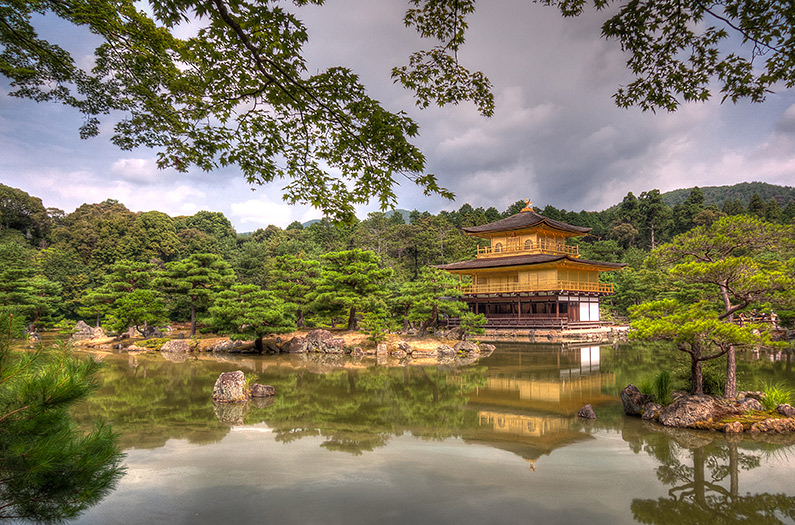
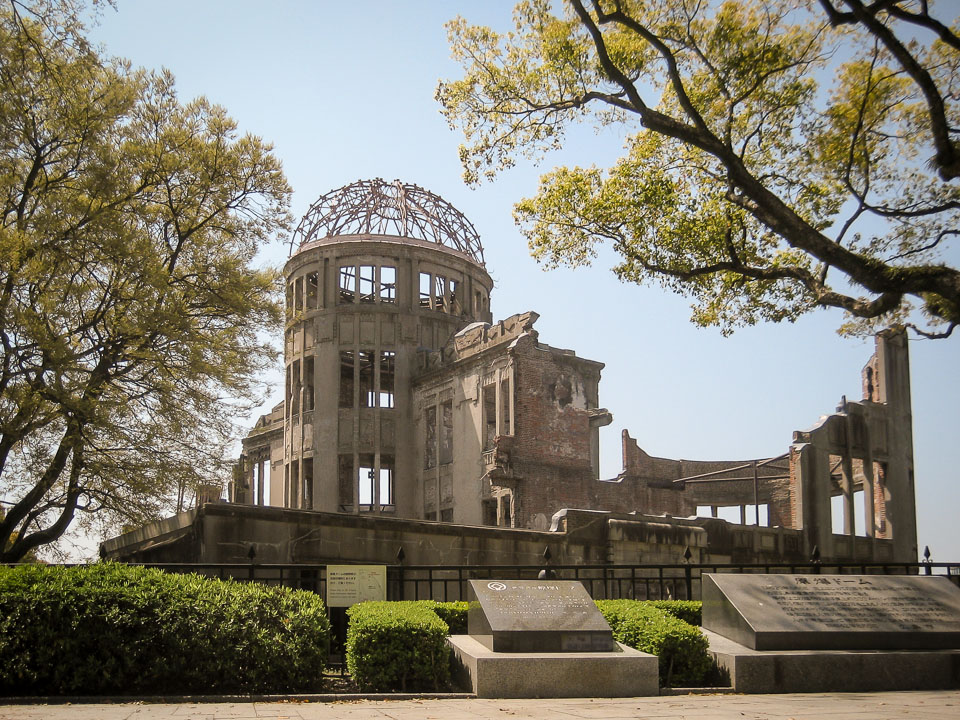
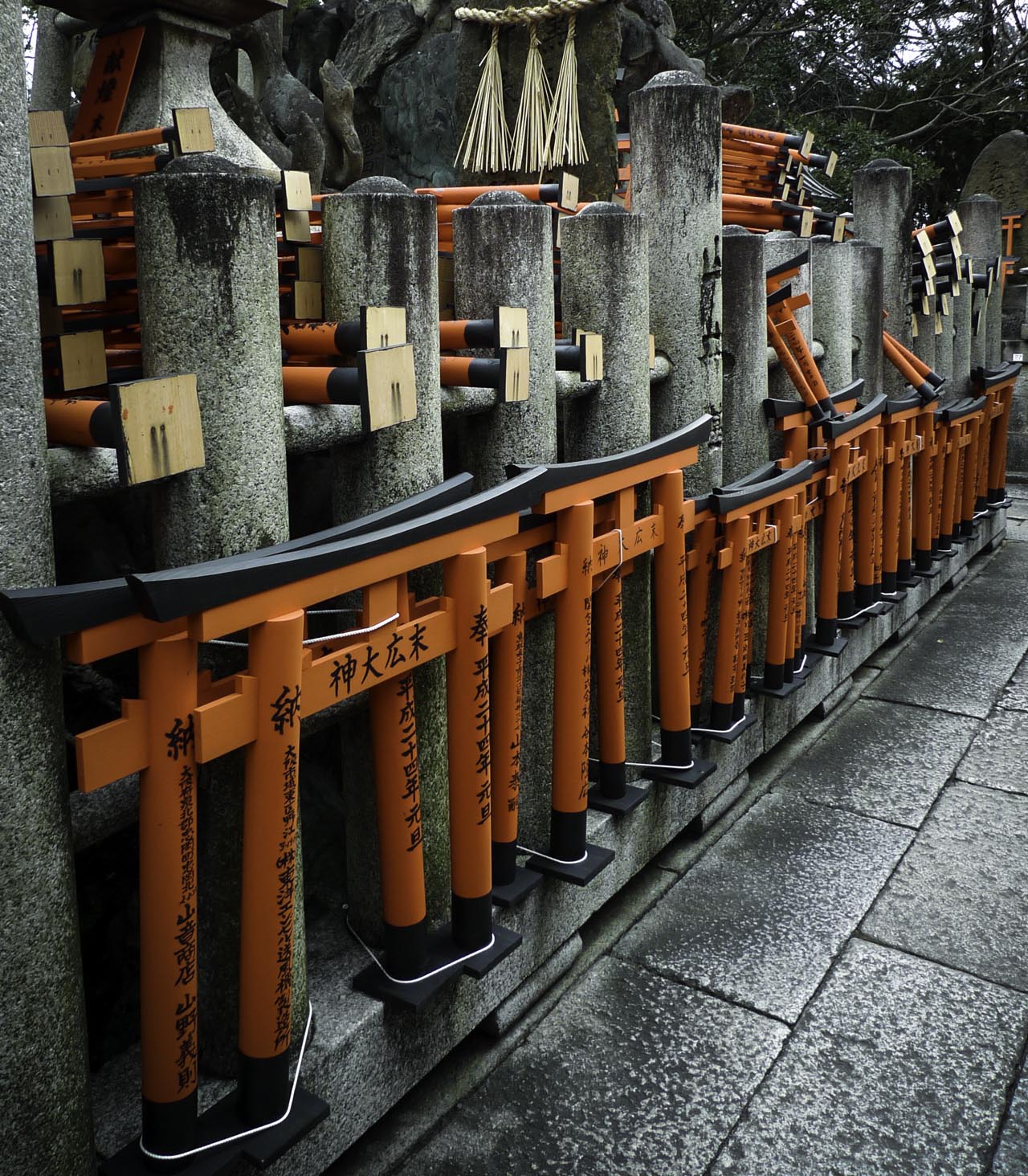
This looks familiar, but I’m not sure if I’ve been there before or not.
Gotta check my photos to make sure, but this looks very interesting, so if I haven’t been there, I’ll definitely go.
Thanks for sharing! 😀
Very interesting indeed! There’s a lot to see in the Tadasu-no-mori (the forest around the shrine)… there are lots of ancient archaeological finds and smaller shrines.
Would be very interested to see a photo if you did visit!